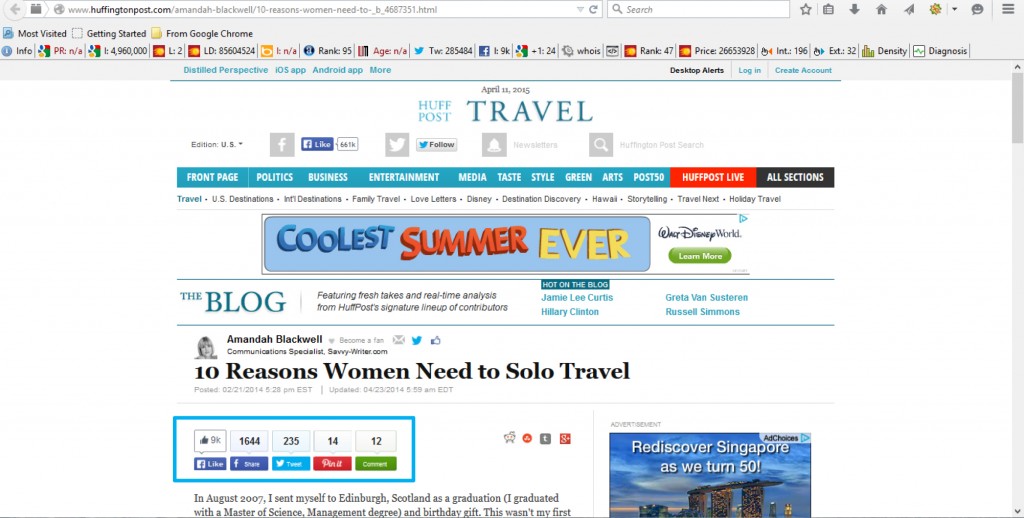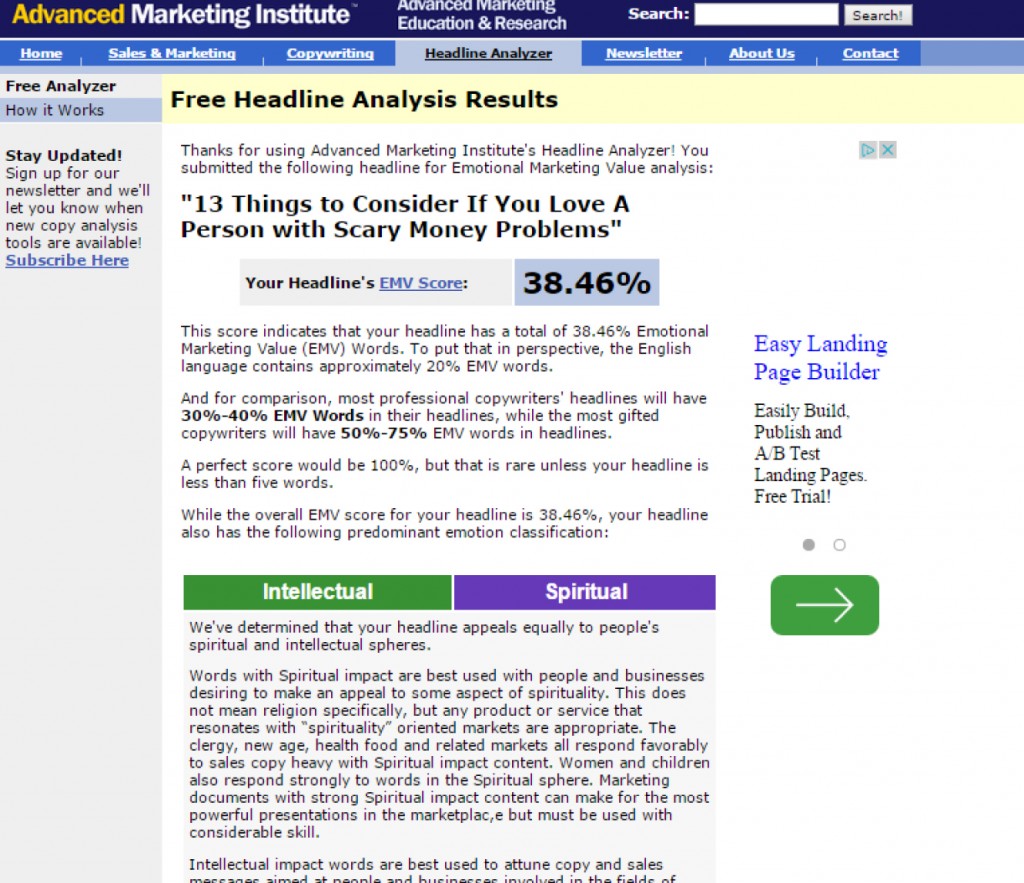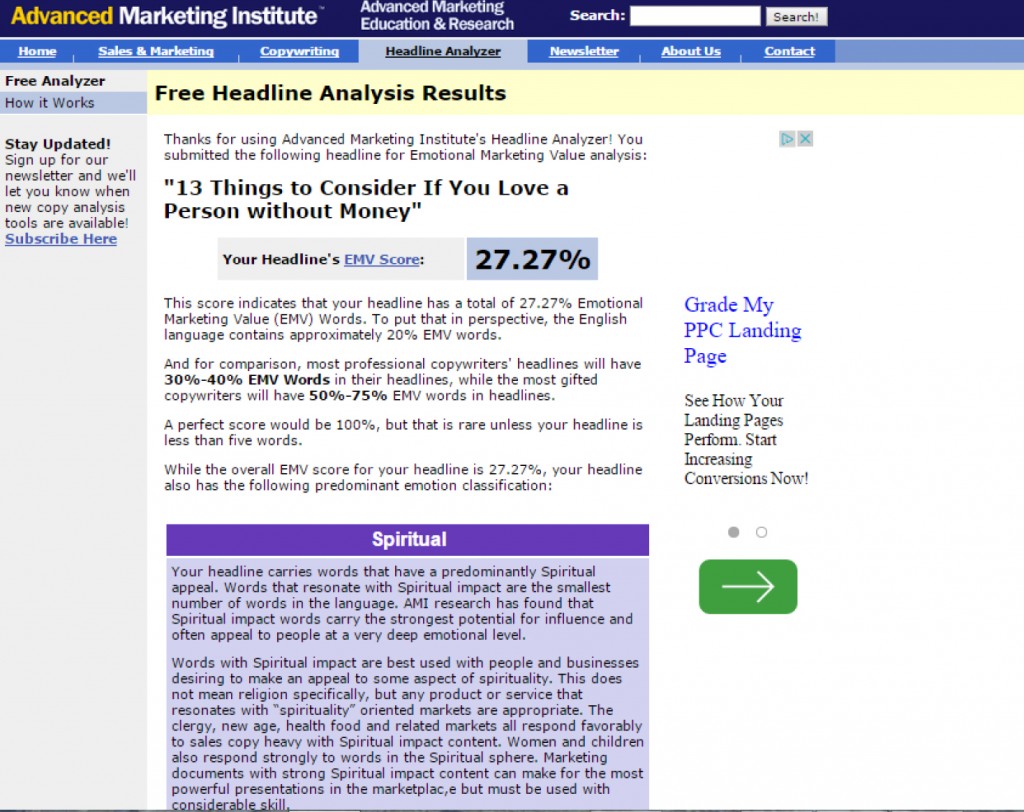Does your company have a blog?
Do headlines get clicked and shared?
If you answered “No,” then you may not be writing emotional headlines.
Emotions can either be positive or negative.
In the post Are Negative Emotions More Important than Positive Emotions? by Aaron Ben-Zeév Ph.D., he states that “negative emotions are more noticeable and because people typically consider themselves to be happy, the average person considers herself to be happier than the average person.”
What does this have to do with writing headlines that get more clicks and shares?
Everything.
I’ve been a content writer since 2008 and have learned and continue to learn how to write headlines. More importantly, I’ve learned to write emotional headlines.
When I started blogging (content writing has changed), you could basically write posts with so-so headlines and they were shared because blogging was still relatively new. If you think you can that today, forget about it.
Read the headlines of newspaper and magazine articles. There’s a reason why journalists and writers use words such as death, die, dying, free, kill, killing, shocking, strange and others. They know how to pull the emotional trigger and suck you into the story.
If your headlines aren’t getting read and shared, read on to find out how to write emotional headlines.
How to Write Emotional Headlines
Write Headlines Your Target Audience Will Read, Click, and Share
Before you create a blog for your company, you need to know who your target audience is. You can easily do this by creating a semi-fictional buyer persona. You may include data such as gender, age, income, and location. Once you have and image of your buyer, customer, or client write headlines that will appeal to them on an emotional level.
Study Headlines
If you’re not reading headlines that get shared and clicked, you may be in trouble. Keep in mind that most companies would love for their headlines to go viral and make the evening news. But, it’s better to write emotional headlines your audience clicks and shares. Study headlines and notice the words that are used. Also, notice how many words are used. Most headlines are 70 characters or less. However, you may write a longer headline.
Write 10 or More Headlines Per Post
Many content writers and copy writers will write 10 or more headlines. I do! The more effort you put into headlines the better. In fact, you may consider re-writing emotional headlines that get more clicks and shares on social media. Why? Because you’ll get the feel of writing headlines and begin to understand what makes a great headline.
Use the Headline Analyzer from Advanced Marketing Institute
As a regular contributor on The Huffington Post, I’ve written many headlines. I started using the Headline Analyzer from Advanced Marketing Institute and it has become my favorite headline tool. Below are screenshots of headlines I analyzed for a financial education post. As you can see the first headline received an EMV score of 38.46% while another one received 27.27%. I chose the higher score and will share the results as soon as my post is live on the HuffPost.
For the fun of it, I analyzed a headline a hospital may want to use for a blog post on heart disease. The headline “10 Warning Signs of Heart Disease and How to Easily Prevent It” received an EMV score of 41.67%, while the headline “10 Warning Signs You’re Having a Stroke” received 14.29%. Which headline would you use? The choice is clear!
Read Headlines Out Loud
One technique I started using is reading my writing out loud. Not only does this help me write faster, but I can hear the words. This helps me to analyze whether or not sentences and paragraphs make sense. You may want to read your headlines out loud to hear if they’re emotional enough. Ask yourself a couple of questions:
- How do I feel after reading the headline?
- What is my immediate reaction?
- How may the audience react?
If your headlines aren’t that emotional, go back and rewrite them. Don’t stop until you’ve come up with at least 5-10 emotional headlines. Choose the best one for your blog post or article.
Get More Engagement with Emotional Headlines
Before you write headlines for your blog posts and articles refer to the above guide.
Read headlines outline and feel the emotion.
If you don’t feel anything, you’ll want to rewrite headlines until you do.
Keep in mind that having an image of your client and customer or visualizing that person sitting in front of you can help you write better headlines – ones that trigger an emotion, whether happy or sad.
Remember, most people buy with their emotions. It’s the same thing with content. People share things that make them angry, happy, sad, or scared.
Liked this post about marketing and data analytics? Click here and sign up for the Savvy-Writer newsletter.





Pingback: Copywriting Tips and Tricks - Amandah Blackwell-Savvy-Writer